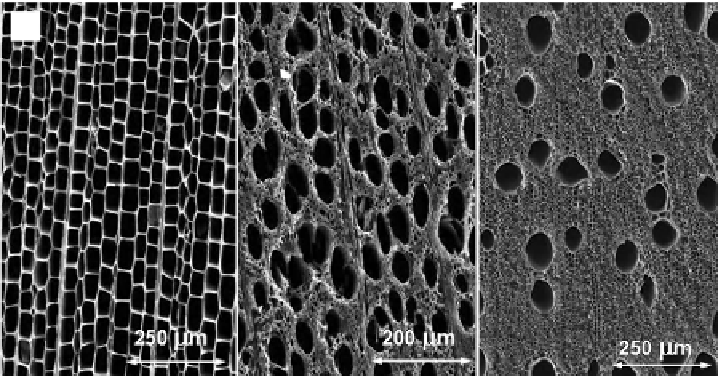Biomedical Engineering Reference
In-Depth Information
(a)
(b)
(c)
Figure 11.3.
Microstructure of different types of natural wood-derived carbon performs:
(a) pine, (b) beech, and (c) eucalyptus.
120
0.5
0.0
-0.5
-1.0
-1.5
-2.0
-2.5
-3.0
-3.5
(a)
(b)
100
eucalyptus
80
60
beech
40
20
beech
eucalyptus
0
0
200
400
600
800
1000
0
200
400
600
800
1000
T (°C)
T (°C)
Figure 11.4.
DSC and TGA curves for (a) maple and (b) mahogany during the pyrolysis.
natural original material is lost during the pyrolysis, mainly in the form of water
vapor and other volatiles. Volume is reduced at the same time by about 60
5 % .
Wood consists of three major macromolecular constituents, namely cellulose,
hemicellulose, and lignin. Typically, half of the dry weight of wood is cellulose, and
hemicellulose and lignin consists of other half (
±
25% each). The exact amount of
these constituents changes with the specifi c nature and type of wood. The overall
pyrolysis process of wood has been studied by a number of investigators and sum-
marized in a recent review publication [Sinha, 2000].
Figures 11.4a and 11.4b show typical thermogravimetric analysis (TGA) and
differential scanning calorimetry (DSC) of pyrolysis up to 1000 ° C [Singh, 2002 ].
There are similarities in the decomposition process. During the initial heating of
the specimens, the removal of moisture starts around 100 °C and is completed
∼





Search WWH ::

Custom Search